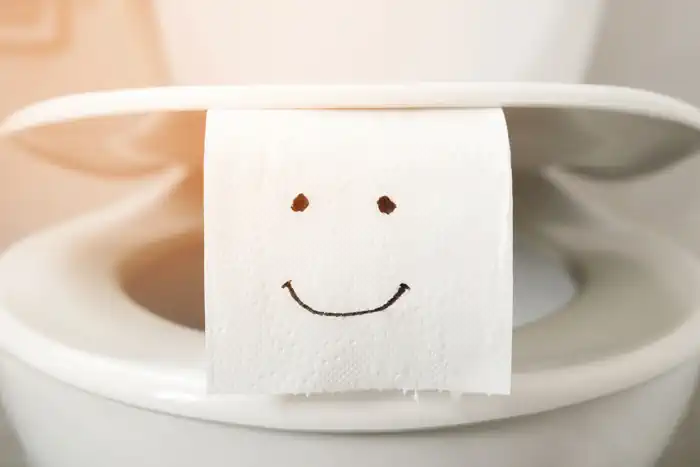Let’s face it, nobody likes cleaning the toilet. It’s a dirty job that nobody wants to do. But we know that maintaining a clean and hygienic toilet is essential for a healthy and comfortable living environment.

While there are countless cleaning products available in the market, some may contain harsh chemicals that can be harmful to your health and the environment.
This is where hydrogen peroxide comes in as a natural and effective alternative for toilet cleaning. Hydrogen peroxide is a versatile household item that can be used for various cleaning purposes, including toilet bowl cleaning. Not only is it safe and non-toxic, but it is also cost-effective and readily available.
Let’s explore the benefits of using hydrogen peroxide for toilet cleaning and provide step-by-step instructions for achieving sparkling clean toilets. We will also share tips for effective use to help you get the most out of this natural cleaning solution.
By using hydrogen peroxide, you can not only keep your toilet clean and fresh but also contribute to a healthier and more sustainable environment. So let’s dive into the world of hydrogen peroxide and discover how it can help you achieve sparkling clean toilets.
Key Takeaways
- Hydrogen peroxide can effectively clean toilet bowls, removing dirt, grime, bacteria, and stains.
- It is safe to use around humans and pets, and even medical-grade hydrogen peroxide is 97% water and 3% peroxide.
- The chemical reaction of hydrogen peroxide kills bacteria, making it a great disinfectant for toilets.
- Hydrogen peroxide can also be used to clean toilet seats and lids, and is a cheaper alternative to brand-name toilet bowl cleaners.
Uses and Benefits
The uses and benefits of hydrogen peroxide for toilet cleaning are numerous. It is a highly effective cleaner that can remove dirt, grime, bacteria, and stains from toilet bowls. The 3% hydrogen peroxide found in the brown bottle is enough to achieve a deep clean. The percentage marking on the label indicates its strength, with medical-grade hydrogen peroxide being 97% water and 3% peroxide.
Hydrogen peroxide is essentially water with an extra oxygen atom, which gives it powerful cleaning properties. The chemical reaction that occurs when it comes into contact with surfaces kills bacteria, making it safe to use around humans and pets.
Hydrogen peroxide is not only effective but also cost-effective when compared to brand-name toilet bowl cleaners. It is a cheaper alternative that offers similar results. However, it is important to note that hydrogen peroxide starts decomposing from its first use, and over time, it will lose its disinfecting power. To slow down the decomposition process, it should be kept away from direct sunlight and stored in its original brown bottle or a dark-colored container in a cool, shady spot.
In contrast, traditional cleaners may have a longer shelf life, but they are often more expensive and may contain harsh chemicals that can be harmful to the environment and human health.
Steps for Toilet Bowl Cleaning
To effectively clean a toilet bowl using a safe and efficient method, it is recommended to pour half a cup of a hydrogen peroxide solution directly into the bowl and let it sit for 20 minutes before scrubbing with a brush and flushing.
This eco-friendly alternative to traditional cleaning agents can remove dirt, grime, bacteria, and stains without causing harm to humans or pets.
When using hydrogen peroxide for toilet bowl cleaning, it is important to remember that the percentage marking on the label indicates its strength.
The 3% hydrogen peroxide in the brown bottle is enough for a deep clean, and for tough stains, it should be left to sit for 30 minutes before flushing.
You can also use hydrogen peroxide to clean the toilet seats and lids, and it can also be poured into the toilet tank to dissolve stains and sanitize the tank without damaging the flapper or flush valve.
By using these toilet cleaning techniques, one can achieve a sparkling clean toilet bowl while also being environmentally conscious.
Tips for Effective Use
Effective use of hydrogen peroxide as a toilet cleaner can be optimized by utilizing a spray bottle for more even distribution and ensuring well-ventilated cleaning spaces to minimize inhalation of the chemical.
Spritzing hydrogen peroxide rather than pouring it into the toilet bowl may prove to be more advantageous as the spray nozzle allows for better saturation of hard-to-reach nooks and crannies. In addition, inhaling excessive amounts of hydrogen peroxide can be detrimental to one’s health, so it is crucial to clean in a well-ventilated space and consider wearing gloves, if you have sensitive skin.
To ensure that hydrogen peroxide retains its cleaning powers, it is vital to store it properly. Hydrogen peroxide begins decomposing from its first use, and over time, it loses its disinfecting abilities. To slow down the decomposition process, hydrogen peroxide should be kept away from direct sunlight and stored in its original bottle or another dark-colored container in a cool shady spot.
By following these storage tips, users can maximize the lifespan and effectiveness of their hydrogen peroxide cleaning solution.
Just Do It!
The dreaded task of cleaning the porcelain throne is one that nobody enjoys. It’s a dirty job, but someone’s got to do it. The thought of scrubbing away at the grime and bacteria can be overwhelming.
But fear not, there are ways to make this unpleasant task a little less daunting. First, arm yourself with the right tools – a good pair of gloves, a sturdy brush, and some powerful cleaning solution, like hydrogen peroxide.

Next, take a deep breath and dive in. It may not be pleasant, but the end result will be worth it.
Remember, a clean toilet is not just about hygiene, it’s about creating a welcoming and comfortable space for yourself and your guests.
So don’t put it off any longer, tackle that toilet and enjoy the satisfaction of a job well done.

